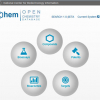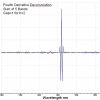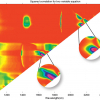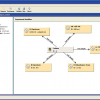Antony N. Daviesa,b and Mohan Cashyapc
aExpert Capability Group—Measurement and Analytical Science, Akzo Nobel, Deventer, The Netherlands
bSERC, Sustainable Environment Research Centre, Faculty of Computing, Engineering and Science, University of Glamorgan, UK
cMASS Informatics, Harpenden, UK
At a recent visit to the Paperless Lab Academy event organised by Peter Boogaard and run over 13–14 May in Amsterdam I met up with Mohan Cashyap and in one of the breaks we started thinking about what applications we knew were currently available to source from the so-called Cloud and what direction our supporting solution providers were heading. There are potentially clear advantages for organisations to be gained from adopting such solutions, especially at times when budgets for core IT support are under immense pressure. An IMS Institute for Healthcare Informatics report by Murray Aitken and Deanna Nass has predicted that the largest life science companies will need to decrease operating costs by at least $35 billion by 2017 to maintain operating margins and investment levels in R&D.1 As analytical scientists and spectroscopists we know that our specific needs are often way down in the list of priorities especially when central IT management are drawing up service level agreements with major service providers. So in order to enable us to at least hold a conversation with the IT managers we thought it would be worthwhile to start looking into the “Cloud”, what it really involves and how it could help us in our daily work. Wikipedia simply defines Cloud Computing as “... a model of network computing where a program or application runs on a connected server or servers rather than on a local computing device such as a PC, tablet or smartphone”. This column will be the first of two dedicated to understanding the Cloud and how it has already, and will in the future, impact the way we work in the laboratory. In Part Two we will give examples of systems already deployable, but to start off with in Part One we will look at explaining exactly what are the accepted terminologies in discussing Cloud systems and how they relate to the “real” world.
A cloud by any other name...
Clearly doing “stuff” in “the Cloud” has become terribly popular in recent years, indeed you (or at least your children) may well make use of services which either identify themselves as Cloud or display most of the characteristics of Cloud applications... but what does this actually mean and how can we classify something as Cloud without falling foul of over-zealous marketing departments? Interestingly, Peter Mell and Timothy Grance of the Computer Security Division of the Information Technology Laboratory at the National Institute of Standards in Gaithersburg, USA, produced the NIST Definition of Cloud Computing in 2011.2 Clearly faced with this immerging field they decide to produce a guide “as a means for broad comparisons of cloud services and deployment strategies, and to provide a baseline for discussion from what is cloud computing to how to best use cloud computing”. The intended audience was described as “... system planners, program managers, technologists, and others adopting cloud computing as consumers or providers of cloud services” which clearly includes us. As you will also find these definitions quite widely adopted it is worth spending some time understanding the differences.
First, let us look at what NIST defines as essential characteristics of a Cloud-based system (Figure 1).

These are clearly recognisable characteristics from your private lives but they are quite challenging if we want to move to a more corporate (or dare I say it regulated) environment. David Stokes has dealt with these NIST definitions and related them each in turn to the issues that they present to be overcome for the use of Cloud systems in regulated organisations.3 He discusses the risks associated with the various models and strategies to cope with many of them.
For us spectroscopists, the total possible market for such services is minute compared to the widely known consumer services such as social media and as such the risk or capital outlay for scientific solution providers in our sphere is disproportionately high—but the hosting of Cloud services to smaller solution providers is a new and growing industry which should lower the barriers and risk to provision. This neatly leads into the second section of NIST’s definition around the different service models (Figure 2).

In larger companies we may already be using applications deployed using one of the service models described in Figure 2 without actually knowing it. That is rather the point of the exercise—drive down costs by using shared resources whilst not impairing the end-users experience. In fact, in discussions around the meeting in Amsterdam it appeared that end-users had found unexpected benefits arising from switching to Cloud-based solutions around better stability and much faster response times as the software service was provided on the basis of a “vanilla” or out-of-the-box state without any internal corporate IT policy modifications to hinder its performance.
Finally, let us look at the various Cloud deployment models which we will use in discussing solution providers’ offerings in Part Two (Figure 3).

Clearly in our future discussions the flexibility of the deployment models will play a key role in delivering the most efficiency gains for our end-users, as well as ensuring that any compliance and corporate scientific data handling policies are guaranteed: such as data being held in specific geographies under certain record retention policies. A potential solution to some of the regulatory issues could be a hybrid system where the applications are served from Cloud environment but the data is held within the corporate “Private Cloud” (Figure 4).

Your preparation for Part Two!
So that is the theoretical part of this story from a very high level. However, the most useful content is always delivered from personal experiences of putting different IT systems together and deploying them in real life. What we would now like is to hear your experiences of moving to Cloud-based service provision. We will be bringing information in Part Two from the perspective of various vendors but your experiences will be far more valuable to your fellow readers. If you are happy to talk either on or off the record or if you are a software solution provider with some user-deployment success stories to be proud of please get in contact by e-mailing [email protected].
References
- M. Aitken and D. Nass, Riding the Information Technology Wave in Life Sciences: Priorities, Pitfalls and Promise. IMS Institute for Healthcare Informatics (March 2014), http://bit.ly/1pZ1zge (retrieved 9 June 2014).
- P. Mell and T. Grance, “The NIST Definition of Cloud Computing”, NIST Special Publication 800-145, http://csrc.nist.gov/publications/nistpubs/800-145/SP800-145.pdf
- D. Stokes, “Compliant Cloud computing—managing the risks”, Pharmaceutical Engineering 33(4), (July/August 2013).














